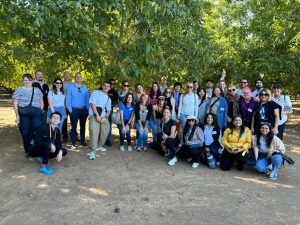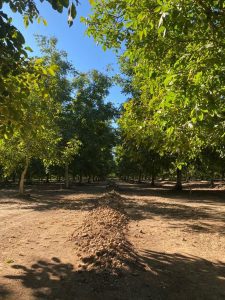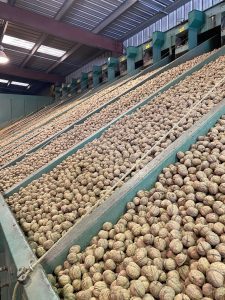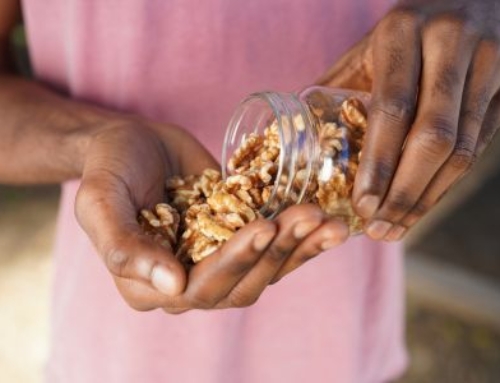
How California Walnuts make it across the globe to your kitchen
California is the second largest producer of walnuts in the world! Our rich, fertile soil and warm climate helps us grow walnuts that have a deliciously mild and creamy taste.
With the annual harvest underway from October through to November, we caught up with fifth generation walnut farmer, Josh Barton, and his family, on their ranch – one of the largest growers in California -to see them in action.
Many of the growers in California like Josh come from multi-generational family farms and over the years have perfected the care, attention and passion that goes into growing California Walnuts.
As we walked beneath the 130,000 trees, you couldn’t help but feel in awe of the surroundings as sunlight trickled through the canopy of the orchard.
Here’s something you may not know – there’s more than one variety of walnut! At the Barton Ranch, they grow three different types, Chandler, Hartley and Howard, but California has more than 30 varieties. All had their own unique taste, size, and colour, but all reaping the same great nutritional and culinary benefits that walnuts can offer.
How are California Walnuts harvested?

It takes five to seven years from when a walnut sapling is planted to when it is ready for harvesting. More than 99% of the walnuts grown in the United States are from California encompassing 4,000 family orchards. The growers know when it is time to harvest because the green hull on the outside of the nut starts to split. The first stage is to shake the readied walnuts from the tree using a mechanical shaker. This process leaves a blanket of whole nuts scattered across the floor, which we were quick to pick up and crack open with our hands to enjoy – the walnuts were of course deliciously fresh and creamy!
The machinery moves from one tree to another leaving thousands of walnuts in its wake ready for the sweepers to come in and position the walnuts into perfect lines across the orchard ground – it’s very impressive to see.
Once the walnuts are swept up and gathered onto the truck, they are moved to the hulling operation, where they are washed and dried to eight per cent moisture and stored in vast containers. This process helps to get rid of any debris from the orchard (leaves and twigs) and helps to protect the walnuts in storage.

Once the walnuts are swept up and gathered onto the truck, they are moved to the hulling operation, where they are washed and dried to eight per cent moisture and stored in vast containers. This process helps to get rid of any debris from the orchard (leaves and twigs) and helps to protect the walnuts in storage. Here’s a tip for keeping walnuts fresh after you get them home from the store. Keep them in the fridge for up to 6 months or freezer for up to 1 year and they will still have their delicious taste and expected crunch.
From there, they are taken to the processing plant where they are split into categories – shelled or in-shell (the type you’d crack at Christmas). They are sorted by size and colour and inspected to the highest standard. Any walnuts that do not meet the criteria are removed and used for various other uses such as bird feed or walnut oil farming, helping to avoid wastage, and ensuing that only the walnuts that meet the high-quality criteria are packaged up and exported around the world, including to the UK.
If you want to make sure you’re buying California Walnuts just check the pack – it will say either Produce of California or Produce of USA. Some even have the California Walnuts logo on the packet to make them easier to find and ensure you’re getting genuine walnuts from California.
And if you are looking for any ideas on ways to enjoy our walnuts, just head over to our recipe pages for some tasty inspiration. Remember… walnuts don’t have to be just a snack… you can use them in salads, curries, stir fries, a yoghurt topper or in smoothies, and so much more!





